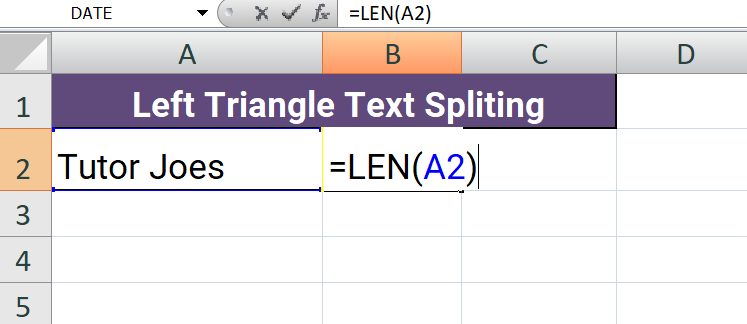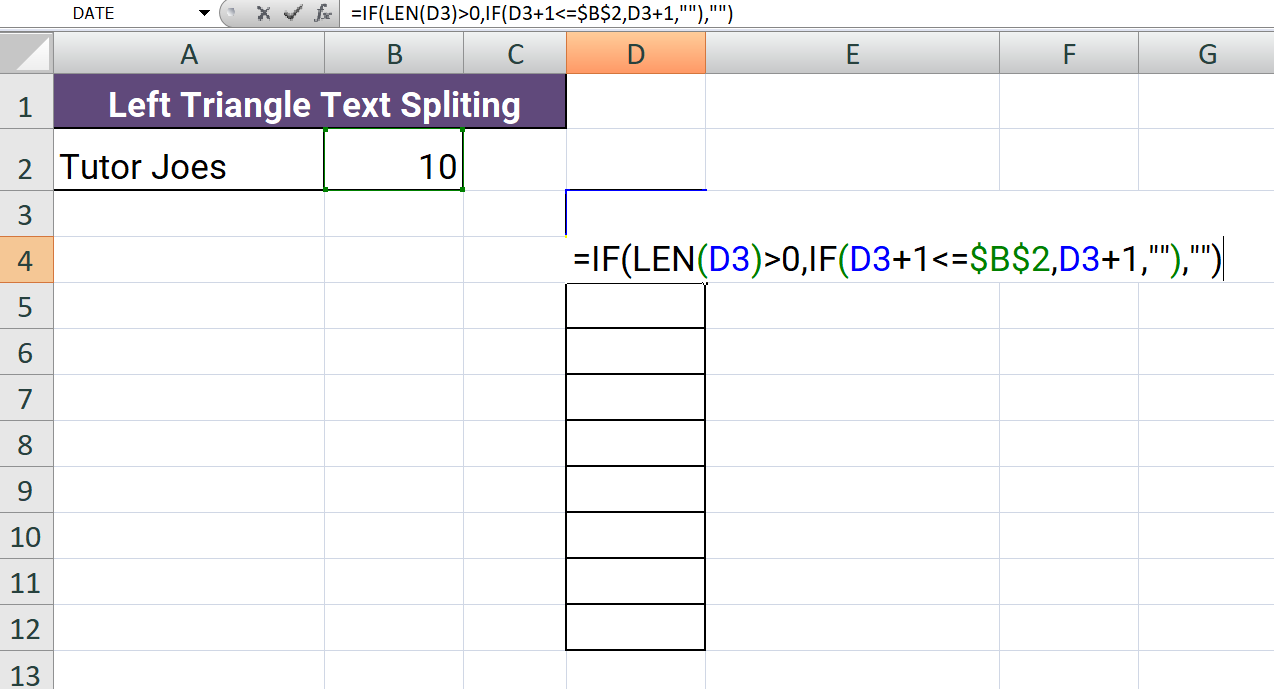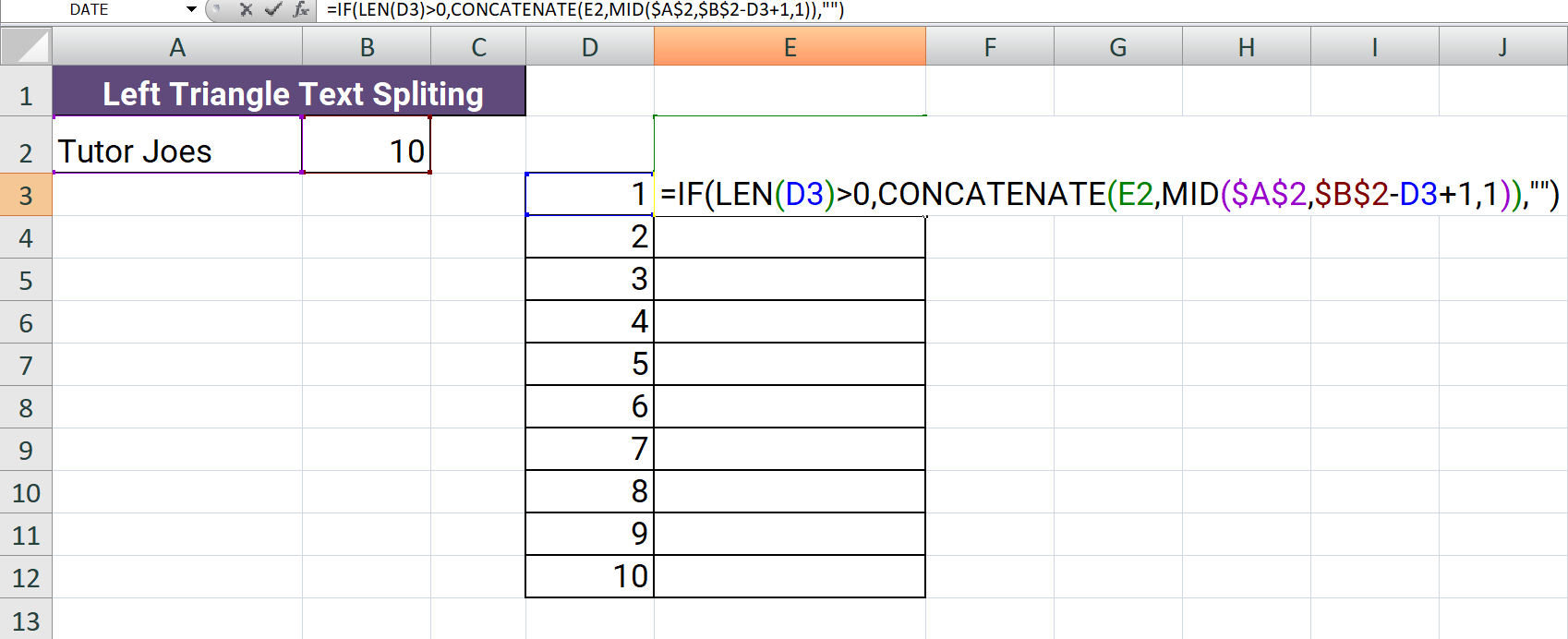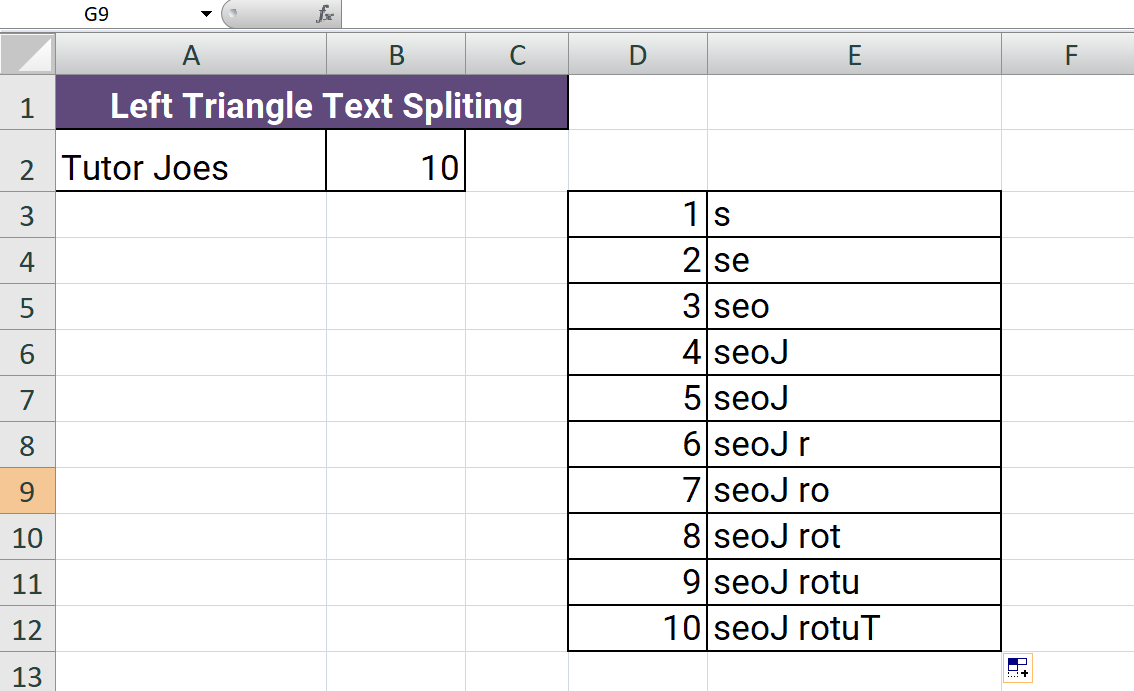left Triangle Reverse Text Splitting in Excel
Right triangle reverse text splitting in Excel involves creating a pattern where a text string, such as a word or a sentence, is displayed in a right triangle shape with the text reversed. Here's an explanation of the steps involved:
The LEN formula with the text "Tutor Joes", here it is:
Let's assume that cell A2 contains the text "Tutor Joes".
To calculate the length of the text in cell A2, you can use the formula:
SYNTAX
=LEN(A2)
In this case, the formula will return 10, as there are 10 characters in the phrase "Tutor Joes", including spaces.

The formula you provided is an Excel formula that uses the IF function along with the LEN function to check if the length of the value in cell D3 is greater than 0. If it is, it then checks if the value in cell D3 plus 1 is less than or equal to the value in cell B2. If both conditions are true, it returns the value in cell D3 plus 1. Otherwise, it returns an empty string ("").
SYNTAX
=IF(LEN(D3)>0, IF(D3+1<=$B$2, D3+1, ""), "")

The formula you provided, =IF(LEN(D3)>0,CONCATENATE(E2,MID($A$2,$B$2-D3+1,1)),""), is an Excel formula that uses the IF function along with the CONCATENATE and MID functions to construct a new string based on the values in cells D3, E2, A2, and B2
SYNTAX
=IF(LEN(D3)>0,CONCATENATE(E2,MID($A$2,$B$2-D3+1,1)),"")
- LEN(D3)>0: This checks if the length of the value in cell D3 is greater than 0. If it is, it means there is a valid position to extract a character from cell A2.
- MID($A$2,$B$2-D3+1,1): If the above condition is true, the MID function is used to extract a single character from cell A2. The start position for extraction is calculated as the difference between the value in cell B2 and D3, plus 1. The 1 specifies that only one character should be extracted.
- CONCATENATE(E2,MID($A$2,$B$2-D3+1,1)): If the condition in the IF function is true, the CONCATENATE function combines the value in cell E2 with the extracted character to form a new string.
- "": If the condition in the IF function is false (i.e., the length of D3 is not greater than 0), an empty string is returned.
To summarize, the formula checks if there is a valid position specified in D3 to extract a character from cell A2. If there is, it concatenates the character with the value in E2 to form a new string. Otherwise, it returns an empty string.

Output

Learn All in Tamil © Designed & Developed By Tutor Joes | Privacy Policy | Terms & Conditions